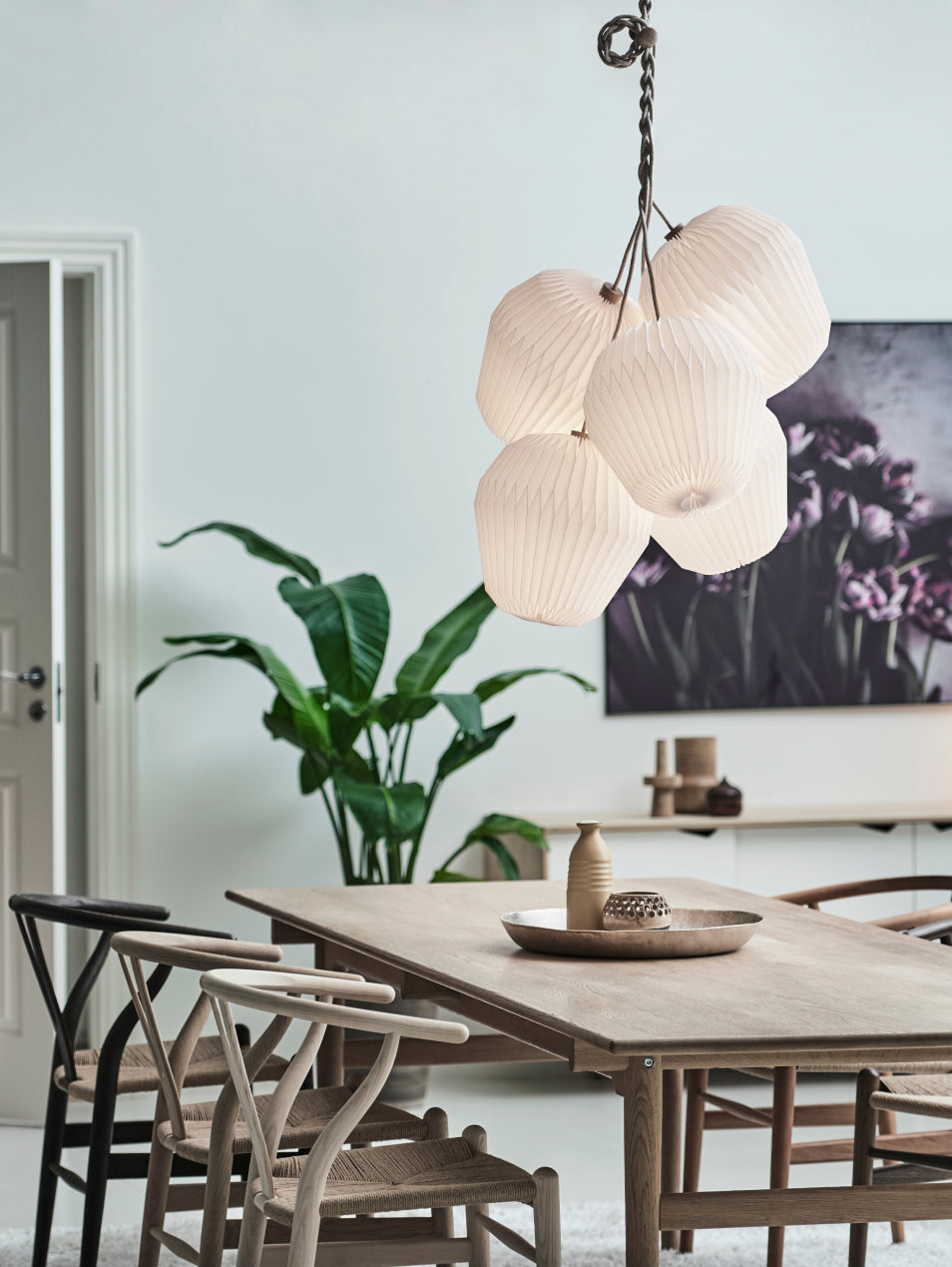1970s lamp still popular today


The original, classic and stylish Model 172, inspired by sine waves, was designed in 1971. Architect and designer Poul Christiansen created the lamp and he has had a lifelong collaboration with Le Klint, designing lamps for the company for over 40 years.
Leading designers
Poul Christiansen’s association with Le Klint started when he was a student at the Royal Danish Academy of Fine Arts Schools of Architecture. Working and studying in the heart of Copenhagen, he often passed by the Le Klint store and showroom located on Store Kirkestræde. Many designers had previously worked with Le Klint, including Mogens Koch, Vilhelm Wohlert, Hvidt & Mølgaard and the Klint family with Kaare Klint in charge - all icons for the young and hopeful student architect.
Le Klint and Poul Christiansen come together
When Poul Christiansen entered the Le Klint store on that fateful day with his presentation for a new design, married couple Bock greeted him. Allan Bock had been the Le Klint sales director for many years while his wife was responsible for the daily management of the store. Poul Christiansen’s presentation was met with interest by the Bocks. However, they stipulated that the lamp would have to be able to be folded out from a single rectangular piece. Inspired by arenas, sports centres, churches and the Sydney Opera House, Poul Christiansen experimented with paper, compass, shapes and folds. The cardboard and acrylic templates grew bigger and bigger. Poul Christiansen would later tell people that his room looked like a pot of popcorn that had been making popcorn all day.
The director loved the design
During the process, Poul Christiansen discovered a new mode of expression in folded structures. The result was a proposal for a folded pendant lamp, where the look was new and different in relation to the existing Le Klint models. The lamp was folded in curves from a single rectangular piece. Poul Christiansen presented the lamp to Allan Bock, who then took it to the factory in Odense. By all accounts, Jan Klint, the then director at Le Klint, loved the design. The first models were put into production. But Poul Christiansen had even more creations up his sleeve.
Several experiments on the drawing board
In collaboration with Le Klint, Poul Christiansen successfully applied in 1970 for permission to exhibit in January 1971 at “Den Permanente” (the then leading exhibition for handicrafts in Copenhagen). Poul Christiansen’s exhibit was called “Belysningsskulpturer” (Lighting Sculptures). It would be based on several of his existing experiments and ideas that had not yet been realised. Le Klint director Jan Klint, supported the project wholeheartedly and in addition to making the factory’s workshop available, he also gave Poul Christiansen the free use of a car – a white Ford Cortina. Poul Christiansen wanted to develop a lamp with a spherical shape. He used mathematical formulas and the sine curve to achieve this. Poul Christiansen succeeded in creating a simple, large lamp that was hung in the biggest window just a few days before the exhibition was due to open. The model was ready for production in January 1971. It is still produced today and it is available in several different variants. The lamp was later designated Model 172 and become one of Le Klints most well-known and best-selling lamps.


